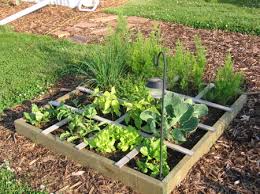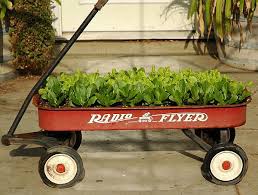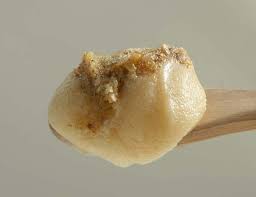When I was young, scientists warned the next ice age was practically upon us. So when those same scientists began predicting "global warming", I had my doubts. By the time Al Gore got around to his prize winning
Inconvenient Truth, my skepticism was growing as I witnessed people from all walks of life having a conversion born of the apocalyptic predictions.
Nowadays, I can no more believe the scientific community to predict climate change than I can a rural preachers predicting the rapture. Frankly, they both seem to be selling the same thing: redemption for believers.
Mark Landsbaum at the
Orange County Register rounds up the recent
global warming advocate scandals: ClimateGate – ... thousands of leaked documents from Britain's East Anglia Climate Research Unit showed systematic suppression and discrediting of climate skeptics' views and discarding of temperature data... if, as global warming defenders contend, the "science is settled?"
FOIGate – ... East Anglia committed a crime by refusing to release global warming documents sought in 95 Freedom of Information Act requests.
ChinaGate – ...Chinese weather station measurements not only were seriously flawed, but couldn't be located. "Where exactly are 42 weather monitoring stations in remote parts of rural China?" ..."how much of the warming seen in recent decades is due to the local effects of spreading cities, rather than global warming?" ...researchers covered up the missing data for years.
HimalayaGate – ... he intentionally exaggerated when claiming Himalayan glaciers would melt away by 2035 in order to prod governments into action. ...admitted it was "speculation" lifted from a popular magazine.
PachauriGate –
R. Pachauri, the IPCC chairman who accepted with Al Gore the Nobel Prize... 'fessed up, Pachauri admitted to making a mistake.
PachauriGate II – Pachauri also claimed he didn't know... ... prominent science journalist said he had pointed out those errors in several e-mails and discussions to Pachauri, who "decided to overlook it."... Pachauri says he was "preoccupied." ...Pachauri's India hoped to wrench billions from countries like the United States to combat global warming's melting glaciers.
SternGate – One excuse for imposing worldwide climate crackdown has been the U.K.'s 2006 Stern Report, an economic doomsday prediction commissioned by the government. ... "some of these predictions had been watered down because the scientific evidence on which they were based could not be verified." Among original claims now deleted were that northwest Australia has had stronger typhoons in recent decades, and that southern Australia lost rainfall because of rising ocean temperatures.
SternGate II –...Stern Report misquoted his work to suggest a firm link between global warming and more-frequent and severe floods and hurricanes. Robert Muir-Wood said his original research showed no such link.
AmazonGate – ... the IPCC claim that global warming will wipe out rain forests was fraudulent, yet advanced as "peer-reveiwed" science. ... based on an unsubstantiated claim by green campaigners ..." "authored by two green activists" and lifted from ... environmental pressure group. The "research" was based on a popular science magazine report.
PeerReviewGate – The U.K. Sunday Telegraph has documented at least 16 nonpeer-reviewed reports (so far) from the advocacy group World Wildlife Fund that were used in the IPCC's climate change bible, which calls for capping manmade greenhouse gases.
RussiaGate – ... evaluated thousands of documents and e-mails leaked from the East Anglia research center and concluded readings from the coldest regions of their nation had been omitted, driving average temperatures up about half a degree.
Russia-Gate II – ... tree-ring data from Russia indicated cooling after 1961, but was deceptively truncated and only artfully discussed in IPCC publications.
U.S.Gate –... The U.S. National Climate Data Center has been manipulating weather data too... Forty years ago there were 6,000 surface-temperature measuring stations, but only 1,500 by 1990, which coincides with what global warming alarmists say was a record temperature increase. Most of the deleted stations were in colder regions.
IceGate – ... IPCC based its findings of reductions in mountain ice in the Andes, Alps and in Africa on a feature story of climbers' anecdotes in a popular mountaineering magazine, and a dissertation by a Switzerland university student, quoting mountain guides.
ResearchGate – ... climate scientist Michael Mann ... climate research impropriety. ...seriously deviated from accepted practices for proposing, conducting or reporting research or other scholarly activities."
ReefGate –...link between climate change and coral reef degradation.... IPCC cited ...but advocacy articles by
Greenpeace.
AfricaGate – The IPCC claim ... cut in half agricultural yields in African countries turns out to have come from a 2003 paper published by a Canadian environmental think tank.
DutchGate – The IPCC also claimed rising sea levels endanger the 55 percent of the Netherlands it says is below sea level. The portion of the Netherlands below sea level actually is 20 percent.
AlaskaGate – ... studies largely overestimated by 40 percent Alaskan glacier loss for 40 years.

 2. Cut an opening into the soil bag, leaving high enough sides to retain the soil.
2. Cut an opening into the soil bag, leaving high enough sides to retain the soil. 3. Break up and even out the soil.
3. Break up and even out the soil.  4. Transplant nursery plants into the soil bag. I used the Square Foot Garden method to determine plant spacing. Finish your project with watering.
4. Transplant nursery plants into the soil bag. I used the Square Foot Garden method to determine plant spacing. Finish your project with watering. I used a smaller square method for my Japanese eggplant and yellow squash. Mainly I wanted to try it...this is recommended for planting tomato plants. In the side slits, I planted garlic cloves pointed side up. You can use the slit variation for lettuces also.
I used a smaller square method for my Japanese eggplant and yellow squash. Mainly I wanted to try it...this is recommended for planting tomato plants. In the side slits, I planted garlic cloves pointed side up. You can use the slit variation for lettuces also. Their biggest detractor as far as I can see is the ugliness of the bags. As the plants grow, the bags will be less visible. My cousin, Katherine, uses hers to plant under trees where the root system doesn't let her dig and covers them with mulch. If the bags put you off, you can always invest in some grow bags. A solution Doug came up with was to build a frame for them, shown above. Here's another example of an attractive, sturdy box for the bags.
Their biggest detractor as far as I can see is the ugliness of the bags. As the plants grow, the bags will be less visible. My cousin, Katherine, uses hers to plant under trees where the root system doesn't let her dig and covers them with mulch. If the bags put you off, you can always invest in some grow bags. A solution Doug came up with was to build a frame for them, shown above. Here's another example of an attractive, sturdy box for the bags. I have arranged my bags in a sunny spot close to my water source. Care for plants is a bit easier than row gardening. Because of the drainage, you are less likely to over water. If using Mel's Mix or something similar, no need to fertilize. Otherwise fertilize once a month.
I have arranged my bags in a sunny spot close to my water source. Care for plants is a bit easier than row gardening. Because of the drainage, you are less likely to over water. If using Mel's Mix or something similar, no need to fertilize. Otherwise fertilize once a month.



















